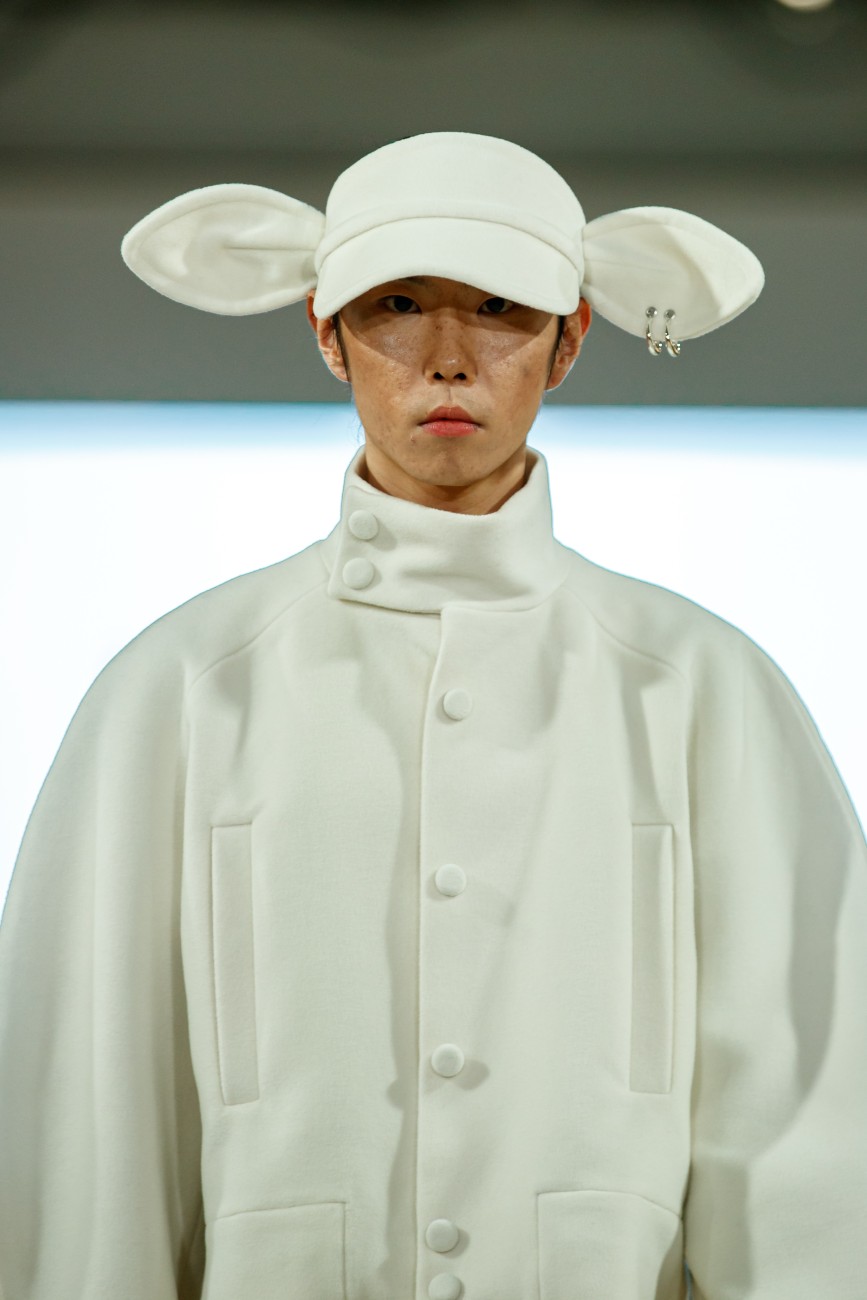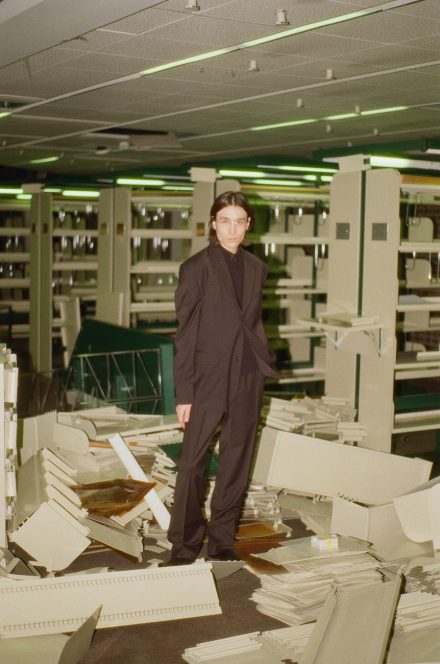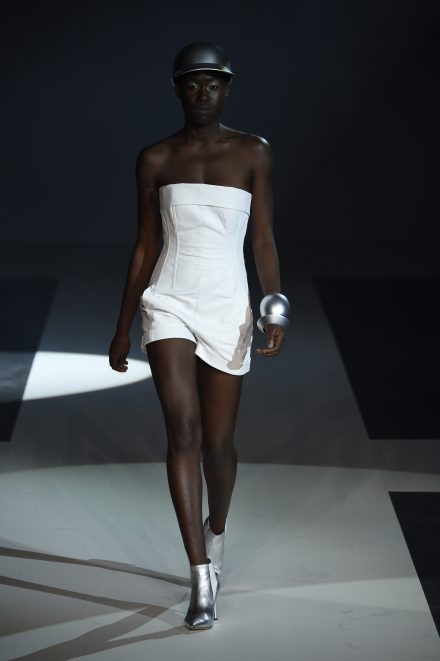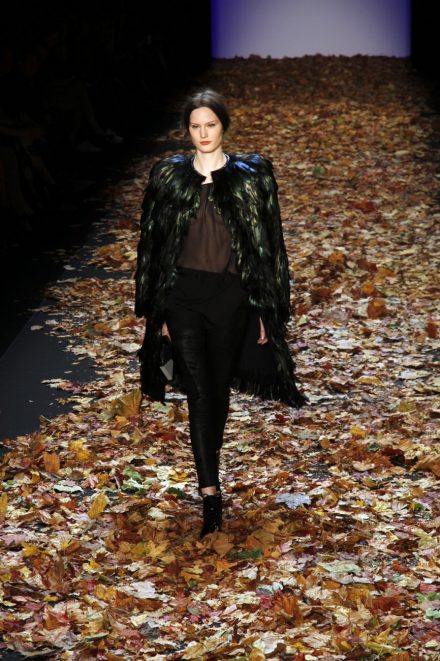A forever favourite in our Berlin Fashion Week calendar is the Neo.Fashion. show, which acts as the largest platform for showcasing young fashion talent in Germany. For the sixth edition, 6,000 visitors were invited to the industrial, brick-clad Reinbeckhallen in Oberschöneweide to watch fifteen fashion shows from the 6th to the 8th of September.
What set this year’s show apart from previous ones was the celebration of international fashion talent. On the 6th of September, Neo.Fashion.22 kicked off with a show that represented five designers from Ethiopia – this was organised in cooperation with the “Next Fashion Design College” from Adis Abeba and Fashion Africa 254. Similarly, on the 8th September, six Ukrainian designers from the Ukrainian Fashion Week were welcomed to present their collections as part of the “Look into the future” project at Neo.Fashion. The decision to extend the talent beyond the German scope was particularly well received.
Besides the general graduate shows, there were also three award shows covering the following categories: Best Design, Best Sustainability Concept, and Best Craftmanship. The likes of Florian Müller, Carina Bischof, Timo Wolf, Sebastian Warschow, Neslihan Degerli, Claudia Hofmann, and Leyla Piedayesh were members of the jury. The Best Design award was granted to Hamburg University of Applied Sciences graduate Max Tautorus for their collection ‘Kinship’. Nanyi Li of the University of Art and Design took the crown for the Best Sustainability Concept for their collection ‘Blumen im Nebel’. And finally, Antonia Dannenberg from Niederrhein University of Applied Sciences, was awarded Best Innovation for ‘Melt Down’.
Out of this rich pool of talent, we have made a selection of our top five designers to watch. Here’s Part 2.
Jana Heinemann
Hochschule für Technik und Wirtschaft Berlin
Jana’s collection ‘VeBoDi’ was not only created for aesthetic purposes but also as part of a project that promises a solution for more sustainable clothing, proving that we can do more with fashion than just look good. The fashion industry, which she claims focuses solely on economic profit and ensuring the cheapest selling price, is one of the biggest polluters of the environment, which in turn contributes significantly to the spread of vector-borne diseases and bacteria in many areas.
This collection plays on the idea of the spreading of disease and fast fashion can be broken and the lives of people in threatened areas can be improved and protected. Jana ensures this can be done by supplementing and partially replacing the conservative production chain with alternative technologies. The cyclical patterns and non-uniform patterns along with the use of mesh and netting over the face symbolise these themes. Pushing the message that this vicious cycle must be broken.
“I want everyone who wears my clothes to feel special, to be able to express themselves while feeling connected to other people and our environment”, says Jana.
 |
 |
 |
Max Tautorus
Hochschule für angewandte Wissenschaft Hamburg
The winner of the Best Design award was Max Tautorus with their collection KINSHIP, which urged us to think about the relationship between animals and humans in the Anthropocene. KINSHIP is Max’s final project for their MA degree at the HAW Hamburg. In 2019, they finished their B. A. at the AMD Academy of Fashion and Design Düsseldorf.
In times of climate crisis, it’s essential to rethink the dichotomy between nature and culture. KINSHIP manages to balance playfulness and sincerity – on one hand, each outfit allows the wearer to dress up as an animal in a fun and child-like way – and on the other, by becoming the animal through clothing, the wearer is pushed to reassess their relationship to animals and nature in a much more intimate way. What is so compelling about Max’s choice to use animal embodiment is that it erases both the traditional boundaries between species but also human gender, demonstrating how clothing should remain non-binary.
 |
 |
 |
Nanyi Li
Burg Giebichenstein Kunsthochschule Halle
The winner of the Best Sustainability Concept was MA graduate Nanyi Li. Her collection ‘Blumen im Nebel’, aka ‘Flowers in the Mist’ pays homage to her Chinese heritage, particularly the Chinese proverb about complexities and ambiguities – things are not as they always seem and may at first be hard to recognise. “I like giving people little surprises by hiding details in places that aren’t easy to find”, says Nanyi who creates a performance with her clothing – take the looking glass for example or the veiled bride. An exciting designer we look forward to seeing more from.
 |
 |
 |
All photos by Gerome Defrance.





